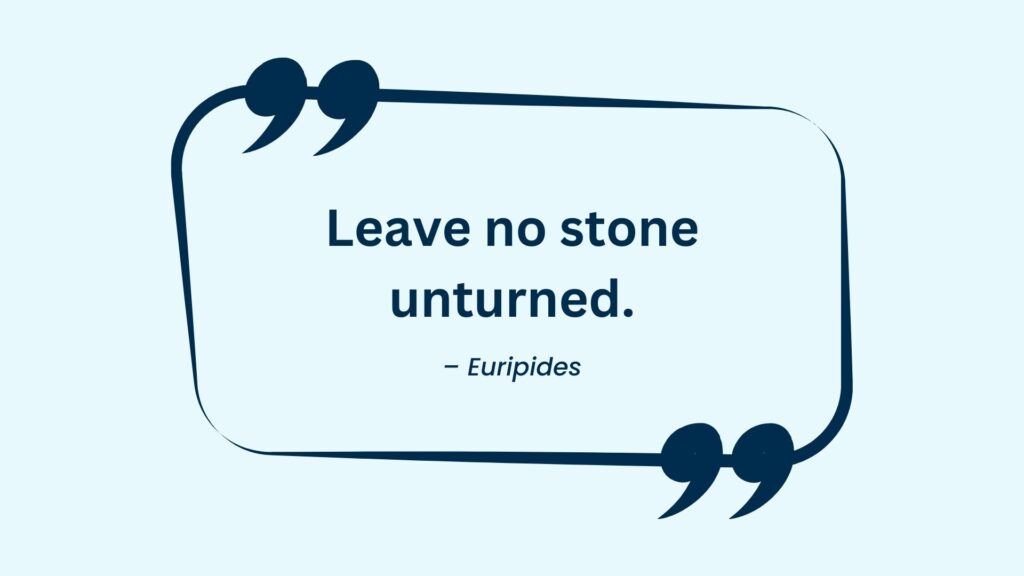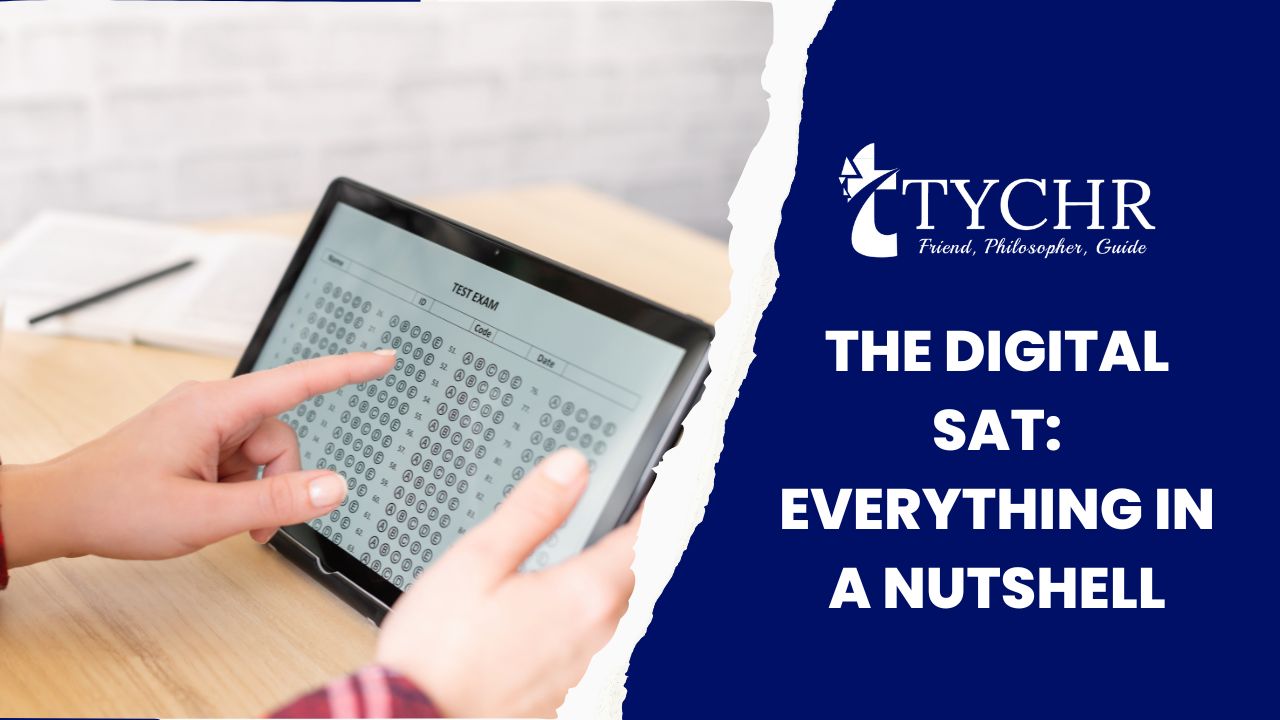Table of Contents
- 1 The Easiest way to compare is to break down the entire structure of the paper. Let’s start with the Paper SAT:
- 2 Moving on to the Digital SAT
- 3 Here’s a summary of what’s been said above:
- 4 The Digital SAT
- 5 How to Prepare?
- 6 Frequently Asked Questions (FAQs)
- 6.1 Q1: What is the digital SAT?
- 6.2 Q2: How does the digital SAT differ from the paper-and-pencil version of the test?
- 6.3 Q3: How do I register for the digital SAT?
- 6.4 Q4: Can I choose whether to take the digital SAT or the paper-and-pencil version of the test?
- 6.5 Q5: Are there any special requirements or equipment needed to take the digital SAT?
An SAT (Scholastic Assessment Test) is a standardized test that the College Board conducts for high school students seeking admission to undergraduate schools. This test evaluates the written, verbal and mathematical skills of the candidate. Students who aspire to pursue undergraduate courses in either the US or Canada are sometimes required to write this test. Let’s learn Everything in a nutshell about ‘Digital SAT’.
It is finally happening! The SAT is going digital from 2024 for all the students in the United States. Soon, the days of squeezing pencils between your fingers, pencil sharpeners, and small ovals on answer papers will be a thing of the past. Students who battle with test weariness can relax! The SAT is being condensed from a 3-hour paper-and-pencil examination to a computer-based exam that takes just under 2 hours and 15 minutes.
However, it’s already become digital for the International students in 2023 to ease the process of taking the assessment. However, that’s not the only change that is happening. There are a few alterations to the content of the exam as well as other things like the time duration of the Scholastic test. Read on further to know what the SAT was and what is going to be changed in the digital version!
The Easiest way to compare is to break down the entire structure of the paper. Let’s start with the Paper SAT:
- The duration of the SAT Paper is 3 hours excluding the breaks (which is 15 minutes) and has a total of 154 questions.
- The total duration allocated for the Reading and Writing section of the SAT is 100 minutes. Out of which, 65 minutes is for the reading portion which encompasses 5 passages with 52 questions. The remaining 35 minutes is for the Writing and Language section which consists of 4 passages with 44 questions. There is a 10 minute break between both these sections.
- The SAT Math section is for 80 minutes and it has two sections; calculator and no calculator. The no calculator section lasts for 25 minutes and it consists of 15 multiple choice questions plus 5 student-produced response questions. Post this section, there is a 5 minute break and the calculator section resumes for the last 55 minutes. In this section, there are 30 multiple choice questions plus 8 student-produced response questions.
- The average time per question for each of the sections are as follows:
- Reading: 75 seconds
- Writing: 48 seconds
- Math (No Calculator): 75 seconds
- Math (Calculator): 87 seconds
Moving on to the Digital SAT
- The duration of the digital SAT Paper is 2 hours and 14 minutes with a 10 minute break in between. It has a total of 98 questions.
- The first section is Reading and Writing which is now combined into one single section. This is split into 2 modules and is for a total of 64 minutes. This section has 54 multiple choice questions and each of them include a very short passage. The passages may even contain informational graphics. Furthermore, modules 1 and 2 have 27 questions for 32 minutes as well. The difficulty of the questions have become adaptive. Therefore, the difficulty of Module 2 will depend on the performance of the student in Module 1. Post this section, there is a 10 minute break.
- The SAT Math section is for 70 minutes and it has two modules similar to the Reading section. There are a total of 33 multiple choice questions plus 11 student-produced response questions. All of the questions are intermixed. Modules 1 and 2 have 22 questions for 35 minutes each. The difficulty of the questions have become adaptive. Therefore, the difficulty of Module 2 will depend on the performance of the student in Module 1. A major change that has been implemented is the permission to use a calculator for the entire math section.
- The average time per question for each of the sections are as follows:
- Reading and Writing: 71 seconds
- Math: 95 seconds
Here’s a summary of what’s been said above:
| Paper SAT | Digital SAT |
| Total duration is 3 hours | Total Duration is 2 hours and 14 minutes |
| Total number of questions: 154 | Total number of questions: 98 |
| Reading, Writing and Math are considered 3 different sections | Reading and Writing has been combined into one section |
| There is a set format of questions that are identical for all test takers | The difficulty of Module 2 will depend on the performance of the student in Module 1. The better you do on the first module, the harder the questions will be on the second module. Adaptive testing is what makes it possible for the test to be considerably shorter. Due to this, each student will receive different questions from one another. |
| There are two sections in math out of which calculator is not allowed for one of them | The use of calculator is permitted for the entire math section |
| The SAT features 5 long passages in the Reading section and 4 passages in the Writing section with multiple choice questions under it | There are 54 very short passages where there’s only one question each tied to it. The passages may even contain informational graphics |
| It usually takes time to get the results because their test sheets need to be marked | Since it is digital, students will get their score just after a few days of taking the test |
| There are 4 separate sections (reading, writing, math with and without calculator) with a different time duration for each | Both the sections are each split into two modules. Each of these modules in their respective sections have the same time duration and number of questions.
Reading and Writing: 27 questions for 32 minutes each (total 54 questions) Math: 22 questions for 35 minutes each (total 44 questions) |
This is what is staying the same
- The digital SAT will continue to assess the same abilities and information found on the paper version.
- The same 1600-point scale will be used for scoring.
- At-home testing will not be an option, even though students will be allowed to take the exam on their own laptop or tablet. The only places where the SAT will be given are schools and testing facilities.
- Accommodations for students who need them during testing will still be provided.

The Digital SAT
Content:
- The new Digital SAT will be a condensed version of the present SAT. With the new format, college preparedness skills will be more prioritized above endurance and speed. The usage of calculators throughout the whole Math portion suggests that the test has undergone major alterations. Along with the SAT’s emphasis on Algebra and Word Problems, we might observe a shift to simpler questions, such as the ACT Math portion, as well as the addition of additional geometry and trigonometry problems.
- The current SAT Reading section demands patience to complete because of its lengthy chapters and usually difficult historical readings. The test is anticipated to contain a wider variety of brief excerpts from the humanities and sciences that explore more current topics in finance, economics, and the environment.
Advantages:
- For instance, if there are any internal or external problems, the paper-pencil test has the possibility of being canceled. On the contrary, since each student will take the SAT on a device they own or one provided by their school, the digital version will be more secure.
- Lastly, as opposed to taking weeks, students will also have access to their scores more quickly.
How to Prepare?
- Reading: Start by reading articles on various humanities and scientific subjects. The Economist, New Scientist, New York Times, and Washington Post are good places to start. You should immediately begin reading the editorials. Discover the most recent environmental and geopolitical topics. Focus on improving your reading knowledge in general. Try developing opinions rather than just being a passive consumer of information.
- Writing and Language: It’s unlikely that grammar and punctuation norms will ever completely disappear from standardized assessments.
- Math: Start brushing up on all of the subjects that will be on the next SAT. Additionally, pay close attention to the geometry and trigonometry questions from the actual ACT tests. Facts and formulas are needed for math. They help you answer inquiries more effectively and precisely.
You now have all the information you require concerning the digital SAT! We anticipate that colleges will consider the digital SAT similarly to how they currently perceive the traditional SAT. Standardized test results are generally losing significance for admission to many schools. So, if you’re unsure which SAT to take, choose the one you think will play to your abilities the most.
All the best!
Frequently Asked Questions (FAQs)
Q1: What is the digital SAT?
A: The digital SAT is an online version of the SAT test that is taken on a computer or tablet. It is identical in content to the traditional paper-and-pencil version of the test.
Q2: How does the digital SAT differ from the paper-and-pencil version of the test?
A: The digital SAT is taken on a computer or tablet, whereas the paper-and-pencil version is taken on a physical test booklet. The digital SAT also includes some additional features such as an on-screen calculator, instant scoring, and the ability to review and change answers more easily.
Q3: How do I register for the digital SAT?
A: Registration for the digital SAT is the same as for the paper-and-pencil version of the test. You can register online through the College Board website or by mail using a paper registration form.
Q4: Can I choose whether to take the digital SAT or the paper-and-pencil version of the test?
A: The choice of test format may vary by location and availability. When you register for the SAT, you will be prompted to choose your preferred test format, but availability may be limited.
Q5: Are there any special requirements or equipment needed to take the digital SAT?
A: To take the digital SAT, you will need access to a computer or tablet with a reliable internet connection, a web browser, and a valid College Board account. You may also need to download and install certain software, such as the secure browser used for the test, before taking the test.








